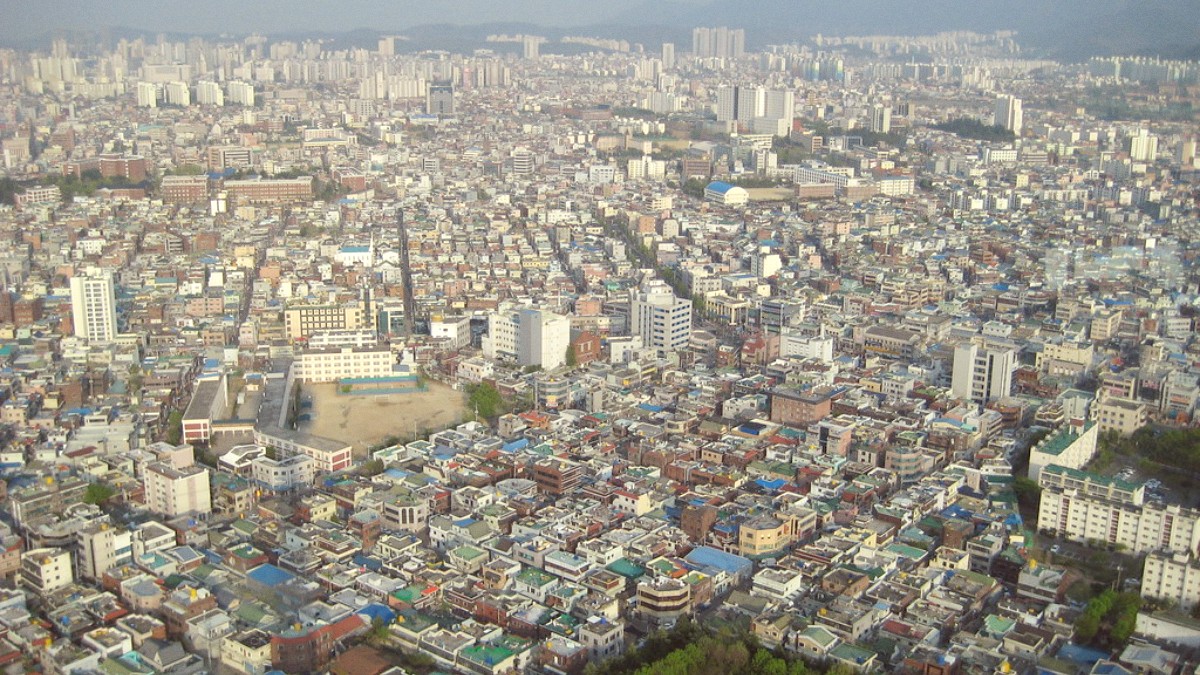
Gyeongsangbuk Do, South Korea
This geographical setting has shaped Daegu's development and climate. The surrounding mountains create an unique microclimate, leading to hotter summers compared to other parts of Korea. The city's central position within the Yeongnam region, which includes the broader Gyeongsangbuk-do province, makes it a significant transportation hub, connecting major cities like Seoul, Busan, and Gyeongju. This location makes regional exploration across various parts of the country straightforward. The diverse terrain, from urban centers to mountain trails and riverine areas, presents a variety of settings for activities and sightseeing.
Daegu is approximately 300 kilometers southeast of Seoul. It ranks as the fourth-largest city in South Korea by population and the third-largest by area, covering nearly 1,500 square kilometers.
Its significant area includes urban districts, sprawling parks, and portions of the surrounding mountain ranges, offering both cityscapes and natural escapes.
Daegu's history spans back to ancient times, with its origins traceable to the Three Kingdoms period (around 57 BCE – 668 CE), when it was known as Dalbeol. Over centuries, the city grew into a prominent regional center. Its early prosperity stemmed from agriculture, with a particular fame for apple cultivation, earning it the nickname "Apple City." The textile industry also flourished, establishing Daegu as "Textile City." This industrial heritage continues to influence the city's economy and identity today.
The 20th century brought various historical events that shaped modern Daegu. It held a role in the March 1st Movement of 1919, a nationwide Korean independence movement against Japanese colonial rule. Later, the city was part of the April 19 Revolution of 1960, a student-led uprising contributing to the end of the First Republic of South Korea. During the Korean War (1950-1953), Daegu held particular strategic importance. It remained under South Korean control throughout the conflict, acting as a temporary capital and a stronghold for UN forces. This experience left a lasting mark on the city's identity and fortitude.
Known as Dalbeol, marking its ancient origins.
Gained prominence as the capital of Gyeongsang-do Province.
Establishment of the traditional herbal medicine market, Yangnyeongsi.
Involvement in the March 1st Movement for independence.
Strategic importance during the Korean War, remaining under South Korean control.
Today, Daegu preserves its past through its historical sites and cultural institutions, embracing its modern role as a center for fashion, industry, and technology.
Early prosperity came from agriculture, with a particular fame for apple cultivation, earning it the nickname "Apple City."
The textile industry flourished, making Daegu known as the "Textile City." This industrial heritage continues to influence the city's economy.
The city offers a living museum of Korean history, where ancient traditions meet contemporary urban life.
Daegu presents itself as a dynamic metropolitan area with a distinct character.
This snapshot gives travelers a quick orientation to Daegu's scale, economy, and unique attributes, helping to set expectations for a rewarding trip. From its mountainous backdrop to its lively markets, Daegu has its own regional flair.
Approximately 2.37 million people (late 2023) within 1,499.5 sq km (579.0 sq mi). A bustling urban center, yet often less overwhelming than Seoul.
Textiles & fashion ("Fashion City"), machinery, metal processing, automotive parts manufacturing. A growing medical services industry.
"Fashion City," "Apple City," "Textile City." Informal "Africa of Korea" for hot summers. Modern infrastructure, efficient subway, bustling downtown.
Its large area includes urban districts, sprawling parks, and parts of the surrounding mountain ranges, offering both cityscapes and natural escapes.